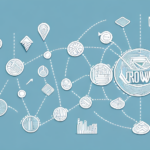Understanding DAP Charges in International Trade
If your business engages in international trade, you are likely already familiar with various incoterms involved in the process. One such incoterm that has gained traction in recent years is DAP, or Delivered At Place. DAP charges are becoming increasingly common in international trade, and it is important to understand what they are and how they can affect your business.
What Are DAP Charges and Their Impact on Your Business?
DAP charges refer to the fees associated with delivering goods to a specific destination as agreed upon between the buyer and seller. Under this incoterm, the seller is responsible for shipping, insurance, and customs clearance until the goods are delivered to the agreed-upon destination. Once the goods arrive, the buyer becomes responsible for unloading and any further transportation.
The impact of DAP charges on your business can be significant. You need to factor in the costs associated with shipping, insurance, and customs clearance when negotiating prices with your supplier. Additionally, consider the potential impact of currency fluctuations on your costs.
DAP charges can also affect the delivery time of your goods. Delays in customs clearance or transportation can result in longer lead times and potentially impact your business operations. Therefore, it is crucial to work with reliable suppliers who have experience in handling DAP shipments and can provide accurate delivery estimates.
Components of DAP Charges
Delivered At Place
This indicates that the seller is responsible for delivering the goods to a specific location as agreed upon with the buyer.
Shipping
Includes the costs associated with transporting the goods from the seller's location to the agreed-upon destination.
Insurance
Covers any potential loss or damage to the goods during transit.
Customs Clearance
Refers to the process of getting the goods through customs to their final destination, which may involve paying import duties and taxes.
Understanding these components allows you to negotiate better terms with your supplier and prepare for any additional costs. It is important to note that DAP charges do not include additional fees that may be incurred once the goods arrive at their destination, such as storage fees or demurrage charges.
Common Misconceptions About DAP Charges
- DAP charges include import duty and tax: In reality, DAP charges only cover shipping, insurance, and customs clearance. Import duty and tax are separate costs that must be paid by the buyer.
- DAP charges are the cheapest incoterm: While DAP charges can be more affordable than other incoterms, they are not always the cheapest option. Costs vary based on distance and insurance levels required.
- DAP charges include unloading and handling fees: These costs are not included and are the responsibility of the buyer.
It is essential to carefully review your shipping contracts and understand all potential costs associated with DAP charges before agreeing to them.
Calculating DAP Charges for Your Business
Accurately calculating DAP charges requires considering several factors:
- Shipping Distance: The cost increases with the distance between the seller and buyer.
- Insurance: The level of insurance depends on the value of the goods being shipped.
- Customs Clearance: Fees vary based on the destination country and the goods being shipped.
Additionally, the mode of transportation impacts DAP charges. Air freight is generally more expensive than sea freight but may be necessary for time-sensitive shipments. The weight and volume of the goods also affect transportation costs.
Pros and Cons of Using DAP Incoterms
Pros
- Clear Delivery Terms: DAP offers transparent delivery terms, simplifying the shipping process.
- Seller Responsibility: The seller handles shipping, insurance, and customs clearance, reducing the buyer's immediate burden.
Cons
- Higher Costs: DAP charges can be more expensive compared to other incoterms.
- Currency Fluctuations: Exchange rate volatility can impact your costs significantly.
- Unloading Responsibilities: The buyer is responsible for unloading, which requires suitable equipment and personnel.
Weighing these factors helps determine if DAP is the right option for your business.
Mitigating the Effects of DAP Charges
To minimize the impact of DAP charges on your business, consider the following strategies:
- Negotiate Clear Terms: Understand the costs associated with DAP charges to negotiate better terms with your supplier.
- Use Hedging Strategies: Protect your business from currency fluctuations that can affect DAP charges.
- Work with a Freight Forwarder: A freight forwarder can manage the shipping process, negotiate terms, and handle customs clearance, ensuring a smoother transaction.
Best Practices for Negotiating DAP Terms
- Understand DAP Components: Familiarize yourself with the individual components of DAP charges to negotiate effectively.
- Consider Various Scenarios: Factor in potential currency fluctuations and shipping delays when negotiating terms.
- Maintain Clear Communication: Transparently communicate your expectations and requirements to avoid misunderstandings.
Role of Freight Forwarders in Managing DAP Charges
Freight forwarders play a crucial role in managing DAP charges by leveraging their expertise in negotiating terms with suppliers and providing additional services such as insurance and customs clearance. Partnering with a freight forwarder can streamline the shipping process and help minimize expenses.
Real-Life Case Studies on DAP Charges
- Case Study 1: A furniture manufacturer in the UK agreed to DAP terms with a supplier in China. However, delays at customs resulted in additional fees and lost revenue for the manufacturer.
- Case Study 2: A tech company in the US used a freight forwarder to manage its DAP charges with a supplier in South Korea. The freight forwarder negotiated favorable terms and handled customs clearance, resulting in a smooth and successful transaction.
These case studies illustrate the potential impacts of DAP charges on businesses and highlight the importance of effective management strategies.
Future Trends in DAP Charges and Global Trade
As global trade continues to evolve, DAP charges are likely to become even more integral. Advancements in technology and logistics management may streamline the DAP process and reduce associated costs. Staying informed about these trends and maintaining flexibility in your shipping strategies will help your business adapt and thrive.
Conclusion: Key Takeaways for Managing DAP Charges
- Understand DAP Charges: Familiarize yourself with what DAP charges entail to make informed decisions.
- Assess Impact: Evaluate how DAP charges affect your expenses and profitability, considering factors like currency fluctuations.
- Mitigate Risks: Implement strategies such as clear negotiations, hedging, and partnering with freight forwarders to manage DAP charges effectively.
By following these best practices, you can navigate the complexities of international trade and successfully manage your DAP charges, ensuring smoother operations and improved profitability.






















